Research July 31, 2020
This Is How We Can Collect Data from the Field While Working from Home
By Geoffrey Gunn, Policy Advisor – Data and Technology, Madeline Stanley, Project Officer
It’s no secret that this year has posed many new challenges to conducting field research.
At IISD Experimental Lakes Area (IISD-ELA), we have adapted our 2020 summer season to allow only a small team of researchers to work on site for one week every month to maintain our 52-year dataset. (For reference, in a typical year, we would have over 60 people on site all season long, collecting data on many of our 58 lakes, conducting whole-ecosystem research, participating in field courses, or visiting the facilities for tours.)
In the spirit of making our monitoring more adaptive, we are adopting new technology practices to collect information about these lakes when we cannot be on site. Limited access is not something unique to this year nor to IISD-ELA, but is a regular challenge for waterways with remote access.
No matter the challenge, we still need to know what is happening in the water to make informed management decisions.
We were recently able to install a sensor and telemetry platform on Lake 227 at IISD-ELA to frequently collect data that is sent directly back to researchers in Winnipeg through the cloud every hour.
Come join us, Geoffrey Gunn and Madeline Stanley, as we take you out onto Lake 227 to install the sensor platform.
In preparation to head out to the IISD-ELA we had to self-isolate for two weeks. Over those two weeks we met virtually to plan our deployment and installation and began to make a pile of gear for our trip.
I (Geoff) had already done one round of isolation, so the second was no surprise. I mostly camped out in the basement. It was made harder because Manitoba had just started to reopen, and I had to turn down patios and keep myself occupied indoors. I like to lay out all the tools and necessities before going into the field. Working in remote environments means you need to pack everything with you.

For this trip, I brought essential field tools: a screwdriver, a couple of adjustable wrenches, a multi-tool, and an electrical multimeter (to troubleshoot broken cable wires). I also packed some things I always take to the field: zip ties, electrical tape and a notebook. Almost any monitoring platform can be secured with enough zip ties and tape! To capture the photos and videos you see below, I packed our DJI Mavic2Enterprise drone (for aerial shots) and a GoPro Hero7.
See how many of these you can spot in the image below.

It was great driving out to the site. On the way, we stopped in a small town called Pinawa to pick up the sensor from our collaborators at Aquatic Life Ltd. With the dock keeping us at a safe distance, Steven Simpson showed us one of their new installations on the Winnipeg River, and we started to appreciate what our sensor would look like in action.
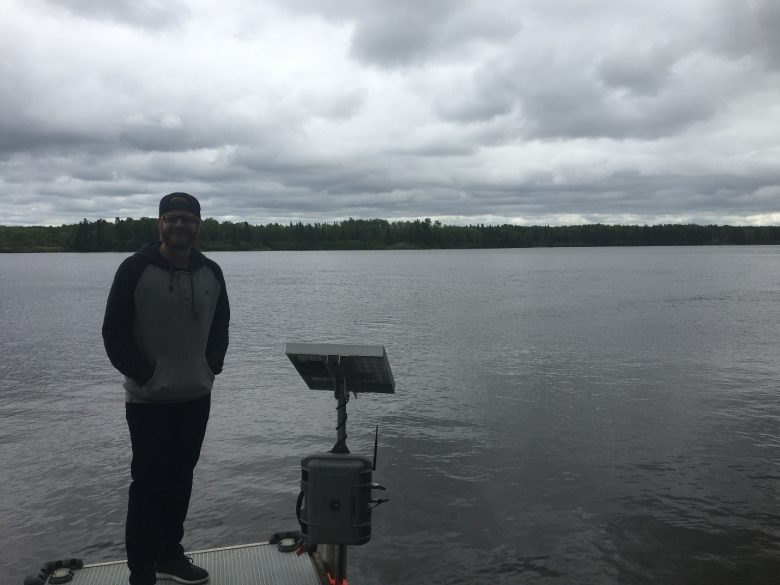
Once we got out to the site, we were among just a few people at a facility that is usually teeming with researchers. We got ourselves set up and organized our gear for deployment.
We’re lucky to be part of a great team at IISD-ELA; our colleague Lee Hrenchuk left us a nice pile of everything we needed—including some lovely nylon rope—from her sampling expedition the week before.
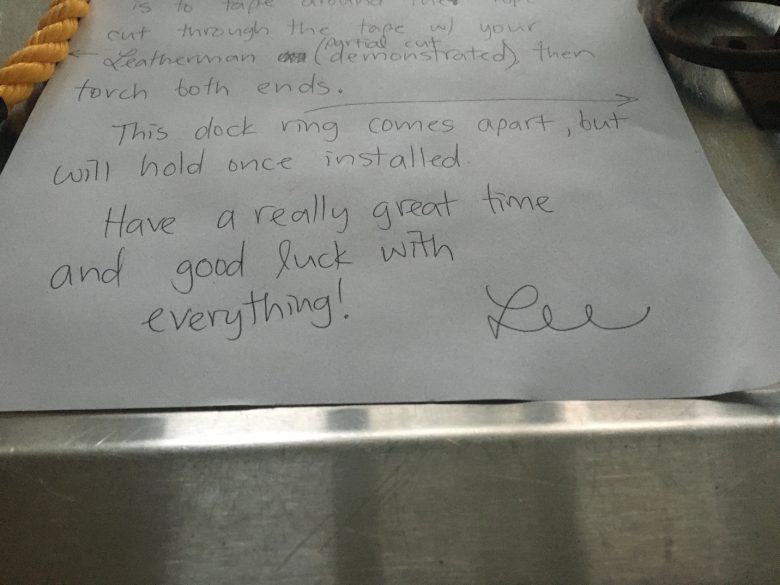
To get to Lake 227, you have to drive down the road with all of your gear, pack the boat, boat across Roddy Lake, unpack gear and portage over to Lake 305, pack the boat and drive across Lake 305, unpack gear and transport across a longer portage to Lake 227! Needless to say, before departing, we triple checked that we had all our gear required for deployment!
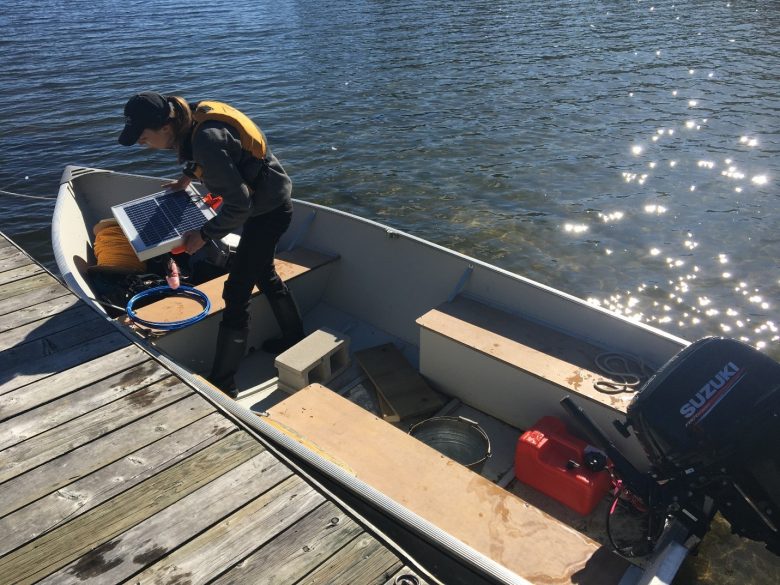
Once we finally arrived at the lake, we set up our platform and all our equipment on a small clearing beside the lake. On the floating platform, we installed:
-
- A solar panel (to keep the sensor running),
-
- The AquaHive box (with a microcomputer, battery and connectors for all the parts), and
-
- The satellite transmitter (to transfer the data to the cloud where we can access it).
We also made sure the dock rings were well-secured so that the platform could stand up to a summer storm or curious wildlife. The sensor sits below the water surface, attached by a cable to the platform and the AquaHive.
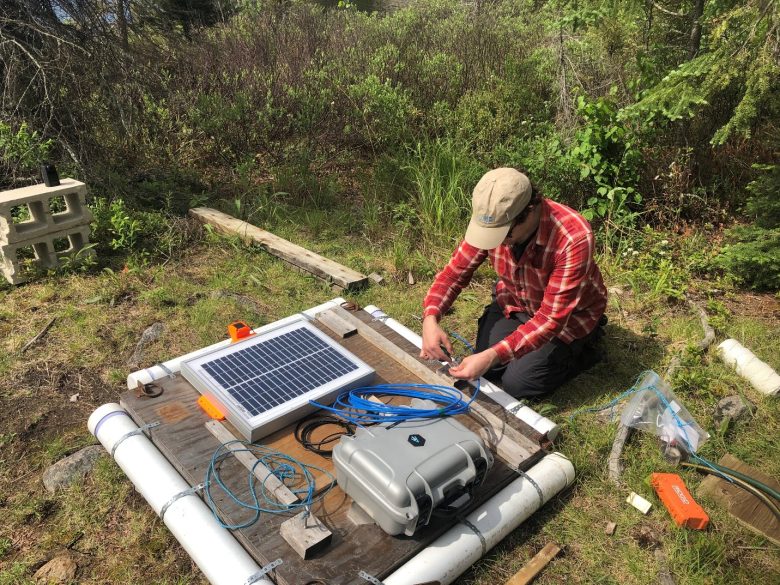
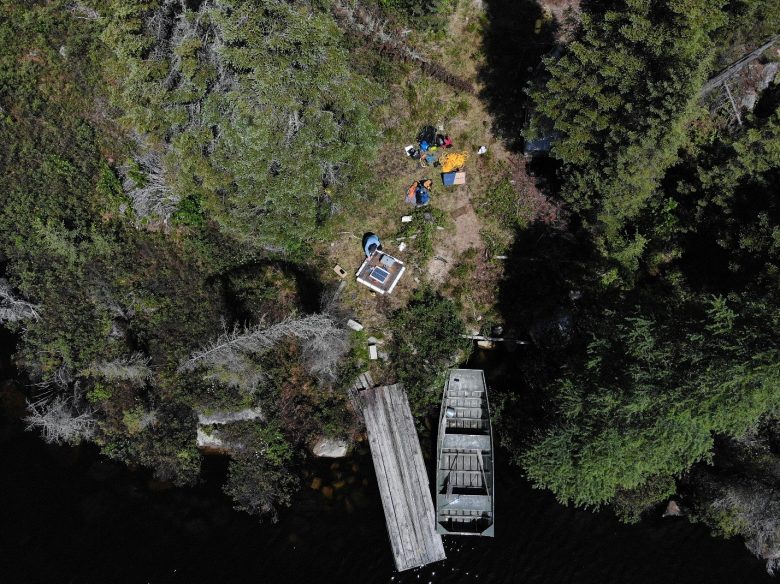
A quick note on the history of Lake 227: We have been adding phosphorus to it for over 50 years to explore the causes and effects of algal blooms—part of the longest-running whole-ecosystem experiment at the IISD-ELA.
Once the platform was all set up on site, we lifted it into the lake and paddled it out near the centre of the lake. We anchored the platform into place with cinder blocks and then attached the sensor at ~ 1 m from the water surface. We then turned on the AquaHive to start collecting and transmitting data every hour.
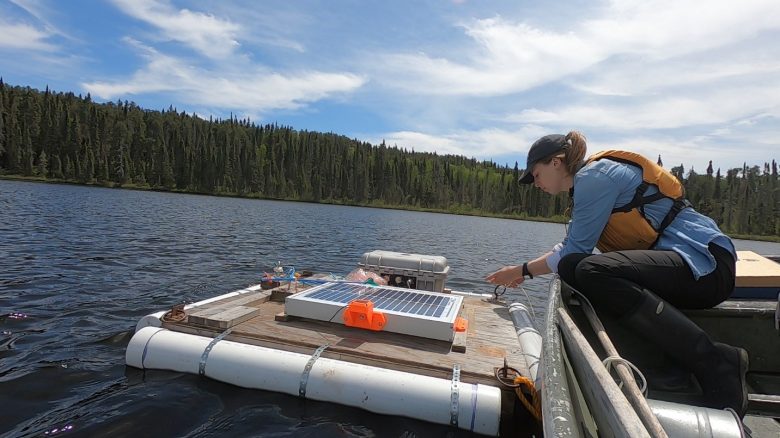
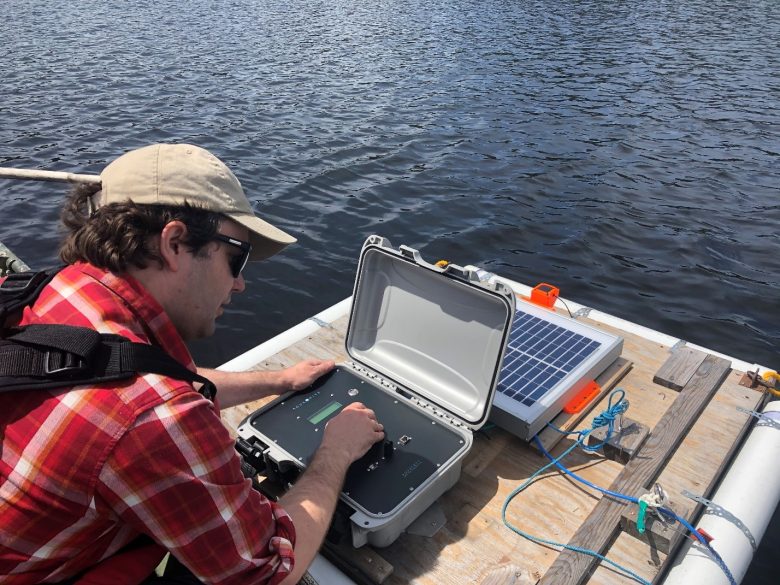
Our sensor package includes a digital thermometer and two fluorescence sensors: one that detects chlorophyll-a and another that detects phycocyanin—both are pigments in algae that will indicate an algal bloom is occurring.
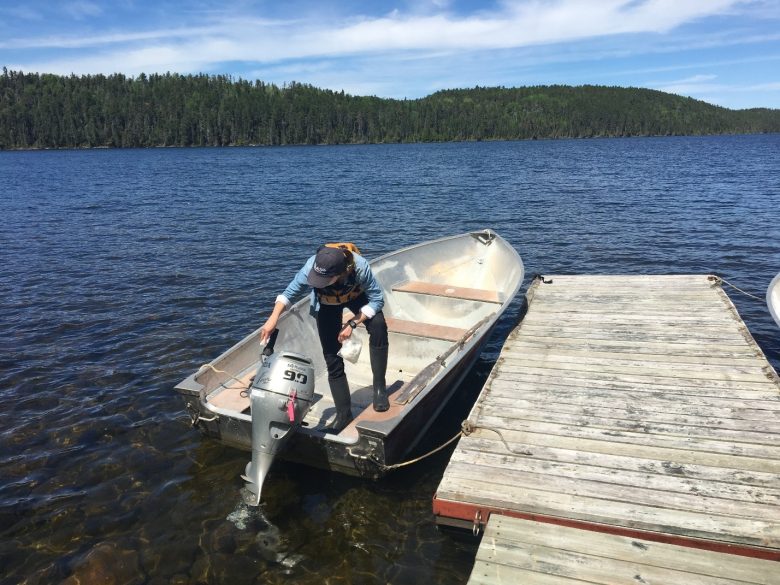
As scientists, it is our instinct to follow best practices and protocols. On each of the boats we used, Madeline wiped down the throttle and tiller handle since we knew another crew would be coming out soon. Taking a little extra time to be safe is always worthwhile!
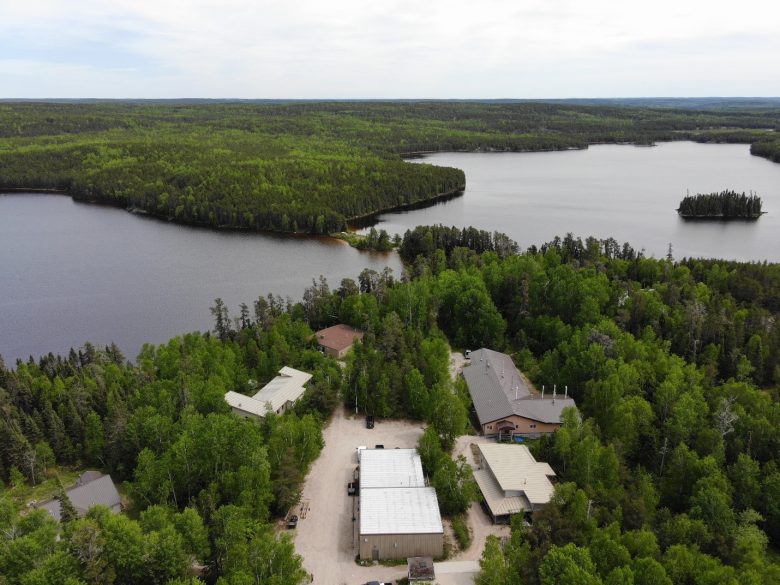
Although our sensor platform could connect to the Internet, we had no way to know it was transmitting successfully. Back at the camp, we called Aquatic Life and made sure the box was sending data to their servers.
Now that we are back at home in Winnipeg, we are able to monitor hourly changes in the lake over the season when we cannot be on site. Soon we will have the data uploaded in real time on our website so you can monitor changes along with us from the comfort and safety of your homes.
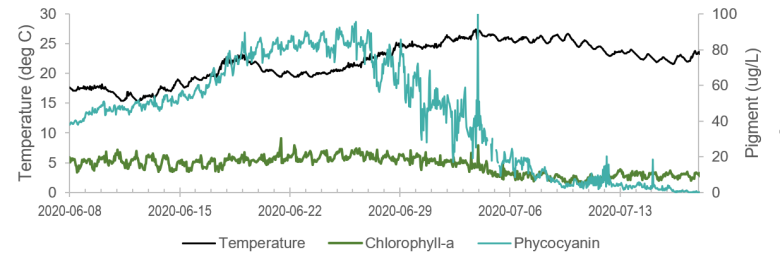
Next step? We plan to use this technology to learn how similar platforms can be installed across Canada to inform us of changes in water quality for faster and better decision making.


This project is made possible thanks to generous funding from the RBC Foundation and the Winnipeg Foundation.
You know that ground-breaking freshwater research you just read about? Well, that’s actually down to you.
It’s only thanks to our generous donors that the world’s freshwater laboratory—an independent not-for-profit—can continue to do what we do. And that means everything from explore what happens when cannabis flushes and oil spills into a lake, to how we can reduce mercury in fish and algal blooms in fresh water—all to keep our water clean around the world for generations to come.
We know that these are difficult times, but the knowledge to act on scientific evidence has never been more important. Neither has your support.
If you believe in whole ecosystem science and using it to bring about real change to fresh water around the globe, please support us in any way you are able to.